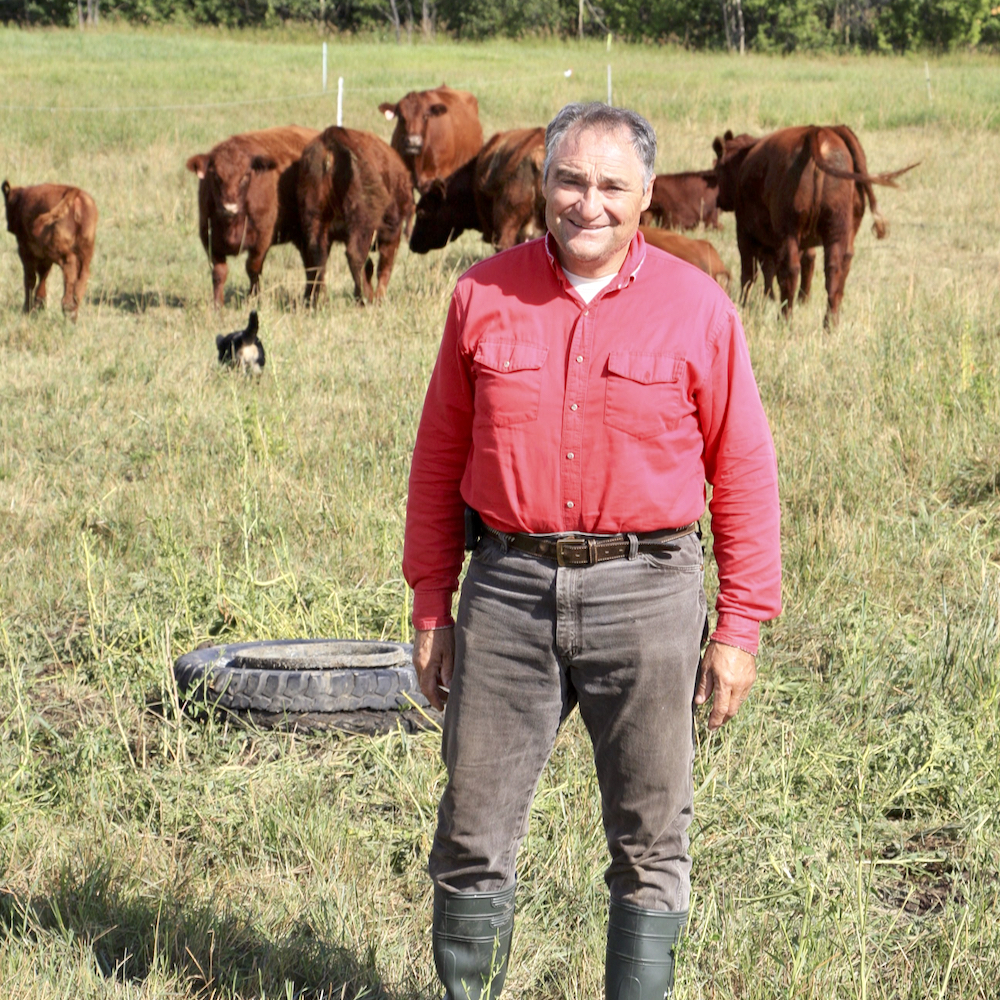Craig Lehr has been able to source the forage and feed he needs this year for Short Grass Ranches, a backgrounding feedlot he co-owns near Medicine Hat.
Still, finding feed and forage for the 7,000-head feedlot, plus its 1,100-head cattle herd, was not an easy task.
“The ground situation is still pretty bleak,” said Lehr, noting there’s been little moisture since some good rains in June and early July. “Everybody was able to get through the summer but … we’re kind of living on the edge again this winter for grass and water.
“It’s all going to depend on how the winter goes, and we need a spring with some moisture.”
That’s the situation in most of the province.
Early summer rains had a big impact and by mid-July, more than half of pastures in the province were rated as good to excellent, according to provincial crop reports. But by the last report this fall, that number had fallen to just over 20 per cent and the percentage of pastures in poor condition was approaching 40 per cent.
“While qualitative rankings improved for the provincial feed supply, conditions in some areas remained poor to fair due to heavy grazing last year and challenging conditions over the past few growing seasons,” said the Oct. 11 report, although it added that “livestock feed supplies are sufficient for this winter, and there is a large amount of straw baled up to complement the feed.”
For Lehr, finding all the needed feed wasn’t cheap.
[RELATED] Feed weekly outlook: Grain supplies good, freight costs higher
“We buy enough volume and I deal with a lot of operators in the Bow Island area, so we were able to access pretty good supply from those guys,” he said. “We were also able to salvage a bunch of hail crop damaged stuff from that big storm that went through. So that kind of helped with our feed bill a bit.
“Supplies are tight. If we were to have a long winter, prices are going to go a little crazy, I think.”
Across Alberta, fewer acres were available for grazing this summer, and that’s a trend likely to continue, said forage expert Grant Lastiwka of Union Forage.
“There are going to be forage production acres coming off, simply because of annual crops outcompeting the ability for cow-calf producers to pay rents,” said Lastiwka. “You’re seeing people breaking chunks up.”

That’s partly why some producers are downsizing their herds or exiting the business entirely, he added. Many areas have seen two or more years of low moisture and that “often means lower animal numbers, more stored feeds being used, and lower returns.”
While cattle prices are up, producers face higher input costs, especially for fertilizer, fuel and machinery, as well as higher interest rates. Feed prices have been kept higher because supplies were drawn down so much last year, he said.
“It is a combination of higher costs, less acres and the previous year’s price setting,” said Lastiwka. “It’s kind of a perfect storm.”
The bright spot is cattle prices.
“Calf prices are holding on quite well,” said Brian Perillat, agribusiness specialist with More Than Just Feed in Strathmore. “We’re back at what we saw in the 2015 level, so for a couple of years, we were trading calves at $2 to $2.25. This year, a lot of the calves are in that $2.60 to $2.70 range, so it’s probably 50 cents a pound higher than last year.”
The price of fats is the strongest it’s been since 2015.
“The biggest disappointment in the fat market is our packers have a lot of cattle to work through,” said Perillat. “They’re delaying the pickup of fat cattle and our prices are at a pretty big discount to the U.S. The basis is really weak.”
High barley prices are also suppressing calf prices, he added.
“If barley was even a dollar a bushel cheaper, we could add 20 cents to the price of calves.”
Still, the feed situation is better than 2021, and there were many decent silage and hay crops in most areas, Perillat said.
Lehr and his co-owners have 1,000 acres under irrigation for silage, various other hay fields, and quite a few acres of hay in the Cypress Hills.
“We had a lot of good rains out there, so we were able to put up a good chunk of our own (feed) again this year, which was nice and helps out a lot,” he said.
But because he is so close to the border, Lehr said producers in his area compete for feed against Americans, who are battling a drought and coming north to buy.
Longer term, the downsizing of the American herd because of drought, coupled with an ever-shrinking Canadian herd, should benefit producers here, said Perillat.
“The supply side of the equation is quite bullish for the next couple of years,” he said. “The uncertainty kind of lies in the demand side – feed grain, Canadian dollar, beef demand and exports with inflation, costs and stuff.
“There’s risk and uncertainty going forward.”
The post Feed situation is much improved this year but far from perfect appeared first on Alberta Farmer Express.


















